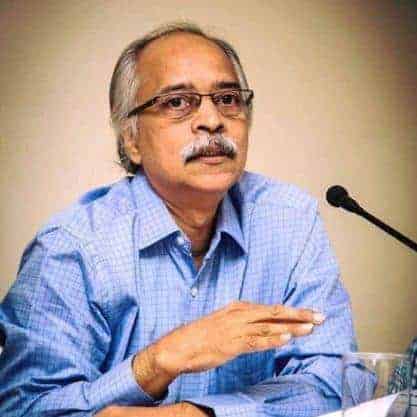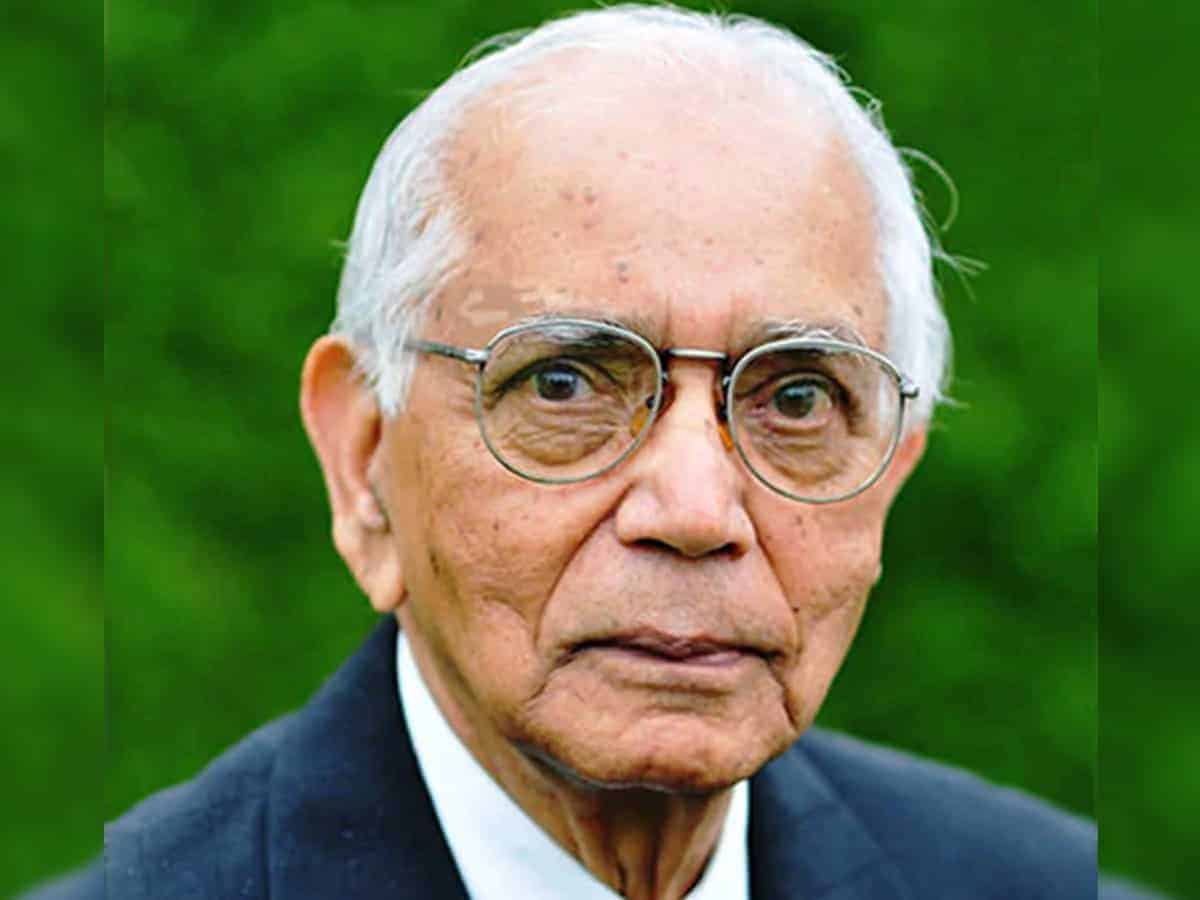
For most kids, mathematics is scary and memorising tables from one to 10 is a tough job. But, that was not the case for the 5-year-old boy, who memorised up to the 16th table with ease.
You might wonder, why up to 16? It was sometime around 1915, in a village in Andhra Pradesh, which was under the British Rule. One Rupee, those days, was made up of 16 Annas. So for all monetary transactions, the Anna was the basis and the math was 4, 8, 12 and 16 Annas.
The boy, who recited the tables without batting an eyelid or in one stretch was Calyampudi Radhakrishna Rao or popularly Prof C R Rao, who would grow up to be counted amongst the greatest Statistician’s of the world. His skill in mathematics was nurtured well by his father, Mr Doraiswamy Naidu, a Policeman and mother Lakshmikantamma, who would wake him early morning and give him milk and ensure he studied.
In School and College, the young Rao would solve math problems in a jiffy without pen and paper. He would also attempt challenging problems in magazines and Journals and be happy to find his name mentioned among those who solved. The signs of a budding statistician were indeed embedded in his genes.
It was no surprise that in the BA (Hons) mathematics course in Andhra University in Visakhapatnam, C R Rao created a record, graduating with first class first. At the age of 19, he finished his Master’s too. He was lucky to find a Cambridge educated mathematics teacher in Dr Ramaswami, who was a great inspiration.
Armed with high credentials and dreaming of a job in mathematics abroad, Rao applied for a Surveyor position in African Military. This necessitated an interview in Kolkata (then Calcutta), in 1939-40.
The ‘City of Joy’, turned out to be a major disappointment for the brilliant, young man. The interview happened, but he did not make it. But, a major twist in his life happened. Rao met another South Indian by name Subramanian, who was undergoing training at the Indian Statistical Institute (ISI). A brief conversation that followed influenced Rao to join a short course at the ISI, and the rest is history, according to Dr BLS Prakasa Rao, former Director of ISI in an article in Current Science.
This incident put Rao firmly on the path to Statistics, more by default. Very soon, he joined the University of Kolkata for a Master’s Degree. He topped with an all time record. Here, he met Prof P C Mahalanobis, the founder of the ISI. Very soon, Rao was at the Institute and emerged a favourite of PC.
The work Dr Rao did during the period 1944-46 in Kolkata, before he was sent to the Oxford University by Prof Mahalanobis, turned out to be path breaking and earned him a permanent name in Statistics. By the age of 26, before his PhD, he had written some of the most remarkable scientific papers that later bear his name Rao or a prefix, like the Cramer-Rao inequality, Rao-Blackwell theorem etc.
That solid foundation and an evergreen zeal and curiosity, combined with hard work sustained, Prof Rao to make phenomenal contributions in the next eight decades. He has authored 16 books, 475 publications, won all the prestigious awards in Mathematics and Statistics, decorated with a Padma Vibhushan, honoured with 38 doctorates and continues to be active as he completed 100 on September 10 and the World of Science celebrated it recalling his legacy.
Bright spark
Prof Mahalanobis, the father of Indian Planning & Statistics recognised the spark in C R Rao. When the invitation came from Oxford University’s Department of Museum, Archaeology and Anthropology to work on a project to unravel the origins of the people of Jebel Maya from the skeletons unearthed, his first choice was Rao.
Interestingly, the work, relating to genetics, led to the publication of a paper in the book Ancient inhabitants of Jebel Maya. Rao did not waste time. He simultaneously did his PhD at the University and completed it in 1948. Here, he met Prof Fisher, with whom he did pioneering work in the next decade.
After Rao returned to Kolkata, his attention was turned to Economic Planning and strengthening the country’s statistical units. This was due to the interest of Prime Minister Jawaharlal Nehru, who visited ISI and entrusted the responsibility of the country’s planning process to Prof Mahalanobis. Rao was part of the discussions. Over the decade in 1950s, the foundations for the National Statistical System, Census data collection methods and planning were laid. Rao was a member of most of the central government committees.
At the global level too, Rao’s work was making waves. The nearly dozen theorems, which bear his name; the statistical model’s he developed and estimation methods found application in a range of subjects like Physics (used in the famous Hiesenberg’s Uncertainty Principle), econometrics, archaeology, Chemistry, genetics, epidemiology, etc.
In 1979, Rao’s career took another big turn. He was invited to Pittsburg University by Prof Krishnayya to deliver a lecture. Within a couple of days he was offered a position by the University administration. As his retirement was due at the ISI, Rao took the offer and moved with his family the same year. He helped set up the Centre for Statistics during tenure of close to a decade in the 1980s.
The Rao Quartet
Interestingly, during the 1970’s, India had four Rao’s dominating the academic landscape—Prof C N R Rao in Chemistry, Prof U R Rao in Space; Prof V K R V Rao in economics and Prof C R Rao in Statistics. Coincidentally, all of them were South Indian.
Each of them have distinguished themselves in their field, won the highest accolades and contributed enormously. Prof C N R Rao, has also been conferred with the Bharat Ratna (along with Cricket great Sachin Tendulkar) in 2014 and is going strong with research work at the age of 86.
Beyond statistics & numbers
Prof C R Rao is a multifaceted personality, though his monumental work and lectures make him synonymous with statistics. He is an avid photographer, who always carried a camera, a lover of classical music and dance and possessed a wonderful sense of humour.
Prof Rao would often joke that his greatest claim to fame was that of being the first person in the world to be gheraoed. As the Director of the ISI during the Naxalbari movement in the late 1960s, Rao was locked up in his office by the Karamcharis for a couple of days. He would say in lighter vein that the ‘Rao in Gherao’ came from his name. Recalled Ravi Visvesvaraya Sharada Prasad, a Delhi based telecom expert, who knows the Rao family closely.
“When I went to study at the Carnegie Mellon University. I stayed with the Rao’s family for a while. He has a great sense of humour and used to play pranks and practical jokes, pulling the legs of his students,” Ravi Prasad recalled.
After another fruitful stint with the Penn State University Prof Rao, formally retired at the age of 81 in 2001. He then came to Hyderabad and started work on setting up an Advanced Centre for Statistics, Mathematics and Computer Science.
Hyderabad and CR Rao Institute
With an initial investment of about $100,000 Prof Rao began the project. His students and well wishers extended support. The University of Hyderabad, gave 4 acres of land. The Indian a Prime Minister, Dr Manmohan Singh, who personally regarded Prof Rao, extended a support of Rs 10 crore from the government.
Thus, began the evolution of the C R Rao Institute. His daughter, Tejaswini, an accomplished Kuchipudi dancer, designed the gallery on Rao, his contribution to Statistics. His wife Mrs Bhargavi Rao took keen interest too. By 2007, the Centre became active and is now making strides.
The Rao’s family was very hospitable, friendly and helped students, thanks to Mrs Bhargavi, recalls Ms Sumana Kasturi, an author, whose family are close friends for decades. Not only was she brilliant with a Masters in Arts and Education but played a strong anchor role in Rao’s life, travelling across the world, organising his work and medical needs, she recalled.
“The first time I met the Raos was in Penn State University where I had gone to pursue Media Studies. With an introduction from my father, who too was from ISI, I found the reception instantaneously warm. He must have been 75. A few weeks later, there was a get together dinner, for which I was invited too. To my surprise and delight, I found that Mrs. Rao had done the entire cooking and the couple personally attended to everyone with great warmth,” she recollected.
In 2009, the University of Buffalo in New York offered him a Professorship. Since then Prof Rao has been dividing his time between New York and Hyderabad, keeping himself with the current developments and contributing in emerging areas like Big Data, AI, Epidemiology by editing handbooks etc.
Two of his papers published were included in the Breakthroughs in Statistics, 1890-1990. The first referred to his work at 25 and the second, when he was 27. His name is found in virtually every text book. It would perhaps be no exaggeration to say that wherever Data is used Rao’s imprint could be found.
Somasekhar Mulugu, former Associate Editor & Chief of Bureau of The Hindu BusinessLine, is a well-known political, business and science writer and analyst based in Hyderabad.

